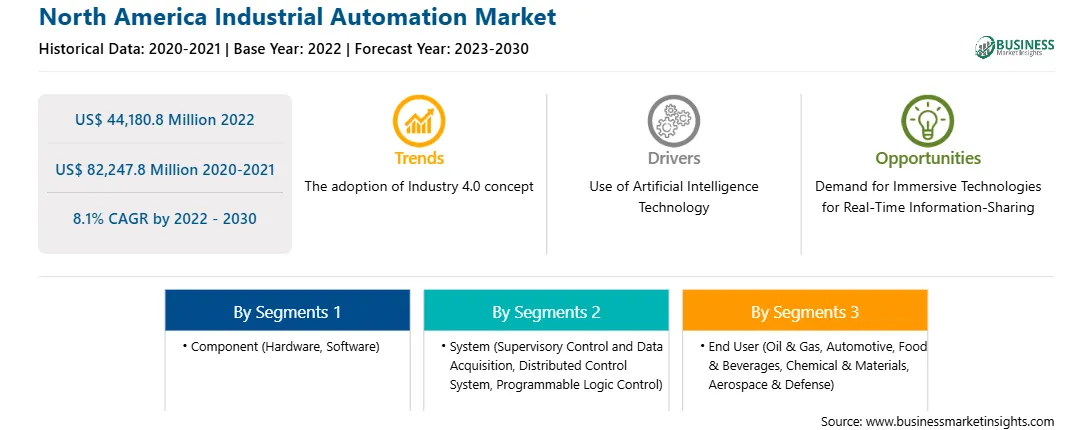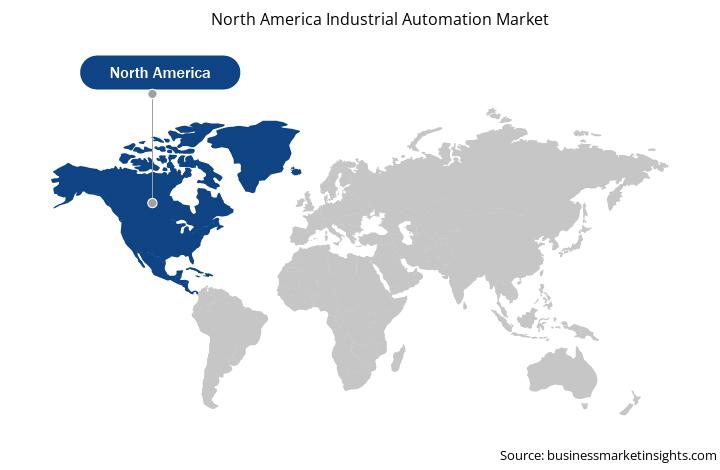Consumer packed food & beverages require high accuracy and repetitive packaging process, which becomes challenging for humans. This factor is influencing the uptake of robotic technologies for activities, such as primary and secondary packaging and palletizing.
Vision-guided robots are experiencing a rise in demand across the sector due to their efficiency in completing repetitive tasks, such as bottle handling, bin picking, and tray loading. Numerous benefits, including enhanced traceability, improved efficiency, and high flexibility, have been driving the need for automation in the food & beverage industry over the years. These factors have encouraged food & beverage producers to invest heavily in automated technology integration across their production facilities. For instance, a US-based snack brand, Utz Brands Inc., announced its plans to integrate automated capabilities across its production plants to reduce its overall operational cost in 2021. Similarly, Hormel Foods is also planning to incorporate automation across its production facilities in 2022. Other food & beverage brands rapidly adopting automated technology include Tyson Foods and Cargill, Inc. Thus, the rise in investment in automation across the food & beverage industry is fueling the growth of the North America industrial automation market.
North America is the most technologically advanced region across the globe due to the presence of a well-established technology ecosystem, the high acceptance rate of advanced technologies, favorable economic policies, and high gross domestic product (GDP) of the US, Canada, and other countries.
Technological advancements are increasing the competitiveness among the markets in North America. Hence, the region is considered a hub for manufacturing high-quality industrial and consumer products. To fulfill the increasing customer demand for high-quality products as well as services, companies are continuously focusing on innovation and automation. A few manufacturers in the region are highly focused on using automation and other advanced technologies to improve production quality and optimize the overall manufacturing process.
Automotive, food & beverages, chemicals & materials, and aviation are among the key end-use industries that involve automation in their operations. Automation provides consistency and helps in protecting the brand's reputation as they make the production convenient and effortless. Also, automation improves the quality through systematic product management and decreases the risk of food and beverage recalls. The food industry in the US is valued at over US$ 500 billion, which includes the processing of food from raw materials to finished products. In the US, many food and beverage processing companies, such as Tyson Foods and Hormel Foods, are increasingly adopting automated technologies.
In Canada, automatic control or automation in logistics refers to the use of control systems, software, and machinery to improve the efficiency of operations. Various errors can be detected in manual data entry, which can lead to increased shipping costs. Automation helps in reducing such errors. With the rise in automation, the logistics & supply chain technology (LSCT) sector in the country is likely to witness lucrative growth in the coming years. This will fuel the North America industrial automation market growth.
The North America industrial automation market is segmented into component, system, end user, and country.
Based on component, the North America industrial automation market is segmented into hardware and software. The hardware segment held a larger share of the North America industrial automation market in 2022. The hardware is further sub segmented into motors and drives, robots, sensors, machine vision systems, and others.
Based on system, the North America industrial automation market is segmented into supervisory control and data acquisition, distributed control system, programmable logic control, and other. The distributed control system segment held the largest share of the North America industrial automation market in 2022.
Based on end user, the North America industrial automation market is segmented into oil & gas, automotive, food & beverage, chemical & materials, aerospace & defense, and others. The automotive segment held the largest share of the North America industrial automation market in 2022.
Based on country, the North America industrial automation market is segmented into the US, Canada, and Mexico. The US dominated the North America industrial automation market in 2022.
ABB Ltd, Bosch Rexroth AG, Emerson Electric Co, Hitachi Ltd, Honeywell International Inc, Mitsubishi Electric Corp, OMRON Corp, Rockwell Automation Inc, Schneider Electric SE, Siemens AG are some of the leading companies operating in the North America industrial automation market.
Strategic insights for the North America Industrial Automation provides data-driven analysis of the industry landscape, including current trends, key players, and regional nuances. These insights offer actionable recommendations, enabling readers to differentiate themselves from competitors by identifying untapped segments or developing unique value propositions. Leveraging data analytics, these insights help industry players anticipate the market shifts, whether investors, manufacturers, or other stakeholders. A future-oriented perspective is essential, helping stakeholders anticipate market shifts and position themselves for long-term success in this dynamic region. Ultimately, effective strategic insights empower readers to make informed decisions that drive profitability and achieve their business objectives within the market.

| Report Attribute | Details |
|---|---|
| Market size in 2022 | US$ 44,180.8 Million |
| Market Size by 2030 | US$ 82,247.8 Million |
| Global CAGR (2022 - 2030) | 8.1% |
| Historical Data | 2020-2021 |
| Forecast period | 2023-2030 |
| Segments Covered |
By Component
|
| Regions and Countries Covered | North America
|
| Market leaders and key company profiles |
The geographic scope of the North America Industrial Automation refers to the specific areas in which a business operates and competes. Understanding local distinctions, such as diverse consumer preferences (e.g., demand for specific plug types or battery backup durations), varying economic conditions, and regulatory environments, is crucial for tailoring strategies to specific markets. Businesses can expand their reach by identifying underserved areas or adapting their offerings to meet local demands. A clear market focus allows for more effective resource allocation, targeted marketing campaigns, and better positioning against local competitors, ultimately driving growth in those targeted areas.

The North America Industrial Automation Market is valued at US$ 44,180.8 Million in 2022, it is projected to reach US$ 82,247.8 Million by 2030.
As per our report North America Industrial Automation Market, the market size is valued at US$ 44,180.8 Million in 2022, projecting it to reach US$ 82,247.8 Million by 2030. This translates to a CAGR of approximately 8.1% during the forecast period.
The North America Industrial Automation Market report typically cover these key segments-
The historic period, base year, and forecast period can vary slightly depending on the specific market research report. However, for the North America Industrial Automation Market report:
The North America Industrial Automation Market is populated by several key players, each contributing to its growth and innovation. Some of the major players include:
The North America Industrial Automation Market report is valuable for diverse stakeholders, including:
Essentially, anyone involved in or considering involvement in the North America Industrial Automation Market value chain can benefit from the information contained in a comprehensive market report.